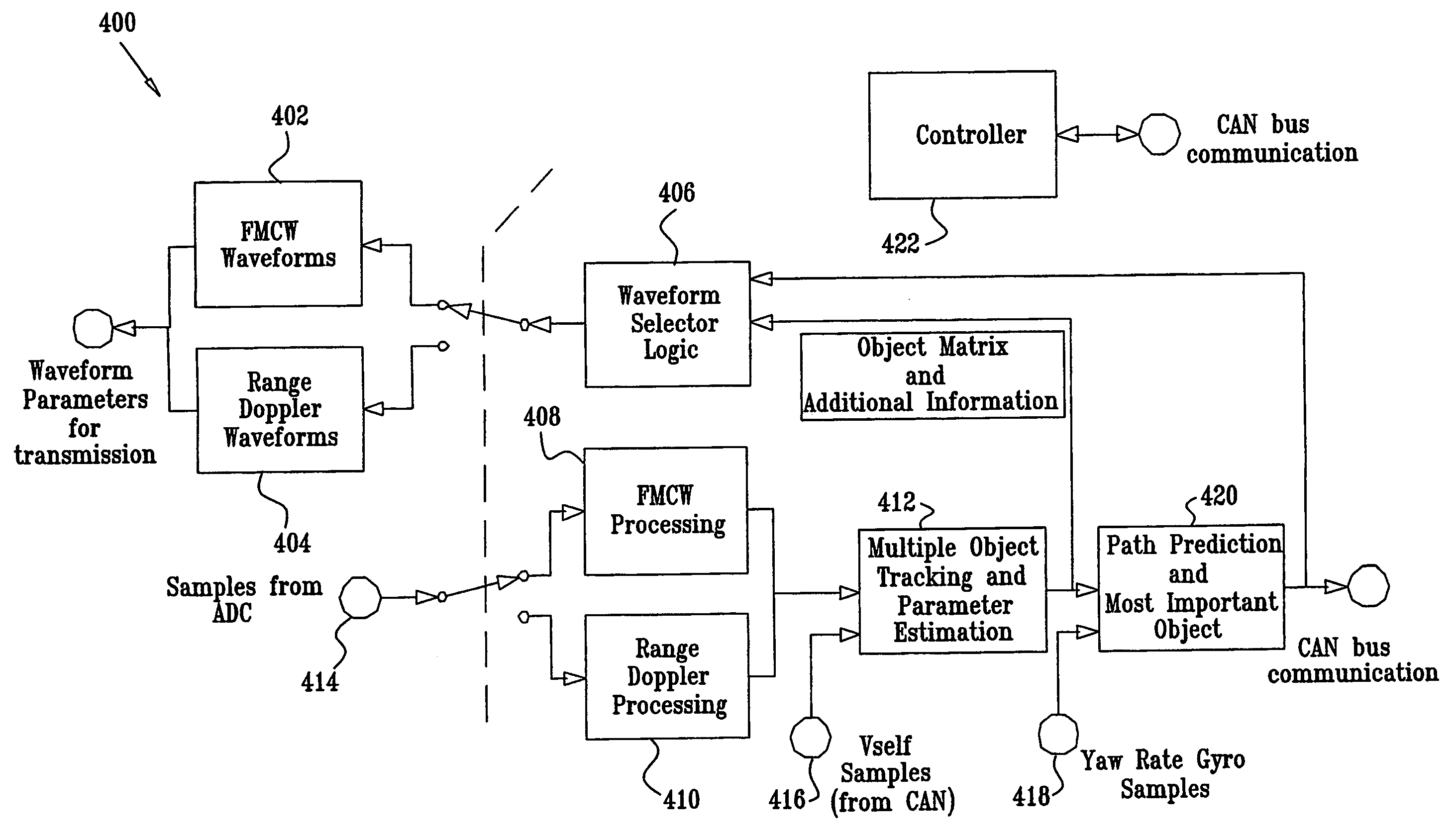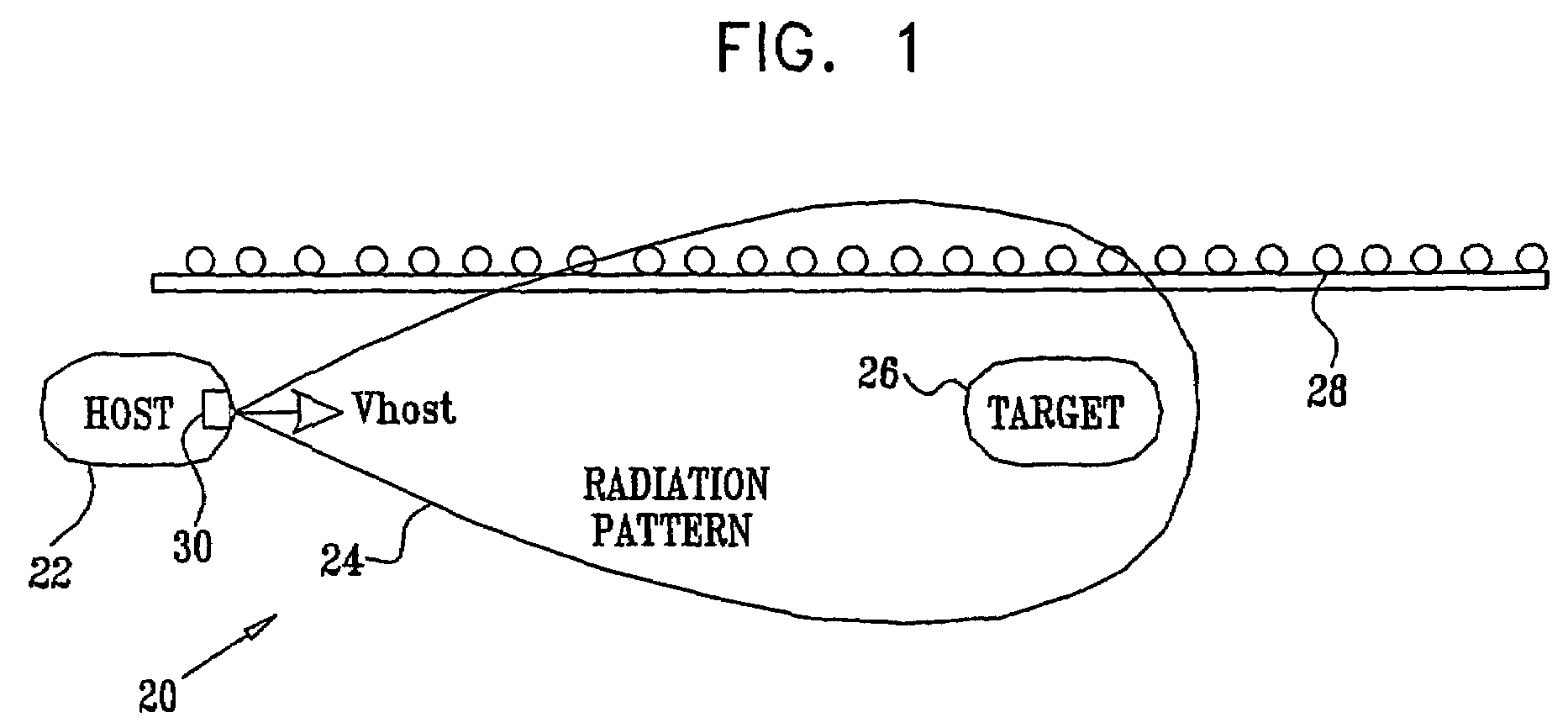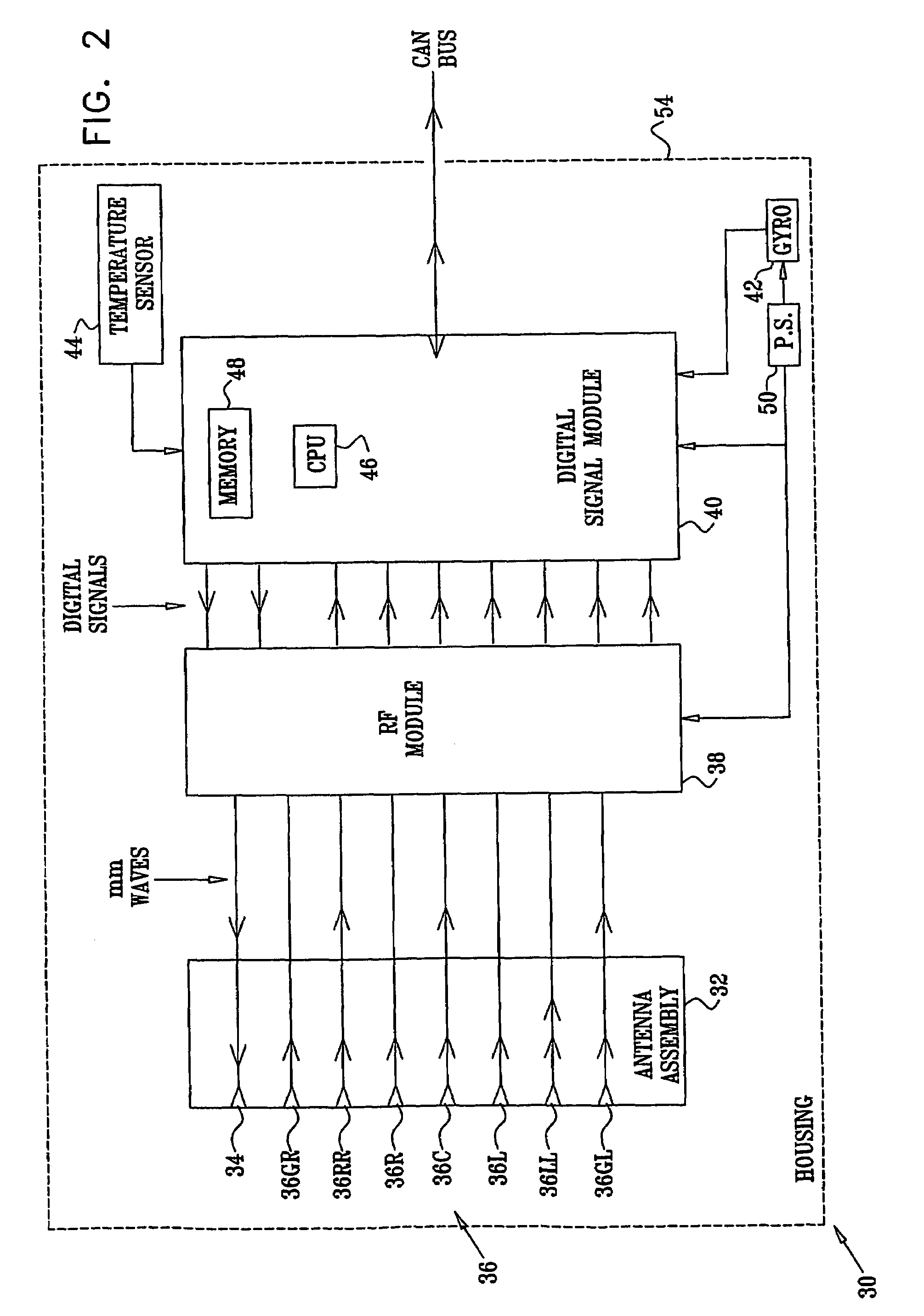Forward-looking radar system
a radar system and forward-looking technology, applied in the field of radar, can solve the problems of high system complexity, low cost, and difficulty in implementing a simple, efficient radar transceiver system that is to be used in a mass market application, and achieve the effects of maintaining mechanical precision of reflectors, good angular discrimination of reflecting objects, and correction work
- Summary
- Abstract
- Description
- Claims
- Application Information
AI Technical Summary
Benefits of technology
Problems solved by technology
Method used
Image
Examples
Embodiment Construction
[0098]Reference is now made to FIG. 1, which is a schematic block diagram illustrating use of a forward-looking radar (FLR) unit 30, according to a preferred embodiment of the present invention. FLR unit 30 is preferably mounted on the front of a vehicle 22, and is used to determine moving objects in and near to the path of the vehicle, such as a vehicle 26, herein termed the target vehicle. Unit 30 is also able to detect stationary objects, such as a guard rail 28, in and near to the path of the host vehicle. All such moving and stationary entities that are detectable by FLR unit 30, such as animals, pedestrians, bicycles, cyclists, and those objects exemplified by vehicle 26 and guard rail 28, are herein referred to as automotive targets. Alternatively or additionally, FLR unit 30 may be mounted on the back or side of a vehicle, so as to detect moving or stationary objects behind or beside the vehicle. By way of example, unit 30 is assumed to be mounted on the front of vehicle 22,...
PUM
 Login to View More
Login to View More Abstract
Description
Claims
Application Information
 Login to View More
Login to View More - R&D
- Intellectual Property
- Life Sciences
- Materials
- Tech Scout
- Unparalleled Data Quality
- Higher Quality Content
- 60% Fewer Hallucinations
Browse by: Latest US Patents, China's latest patents, Technical Efficacy Thesaurus, Application Domain, Technology Topic, Popular Technical Reports.
© 2025 PatSnap. All rights reserved.Legal|Privacy policy|Modern Slavery Act Transparency Statement|Sitemap|About US| Contact US: help@patsnap.com



